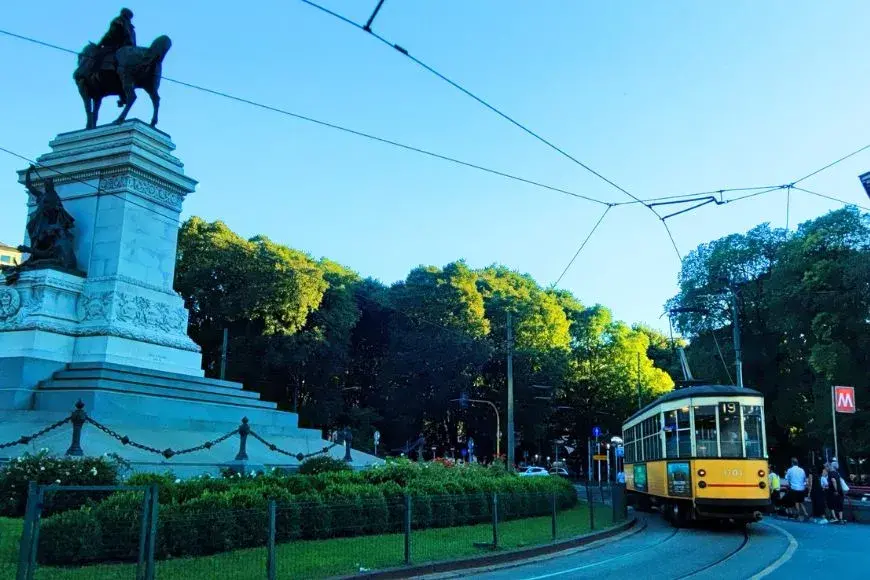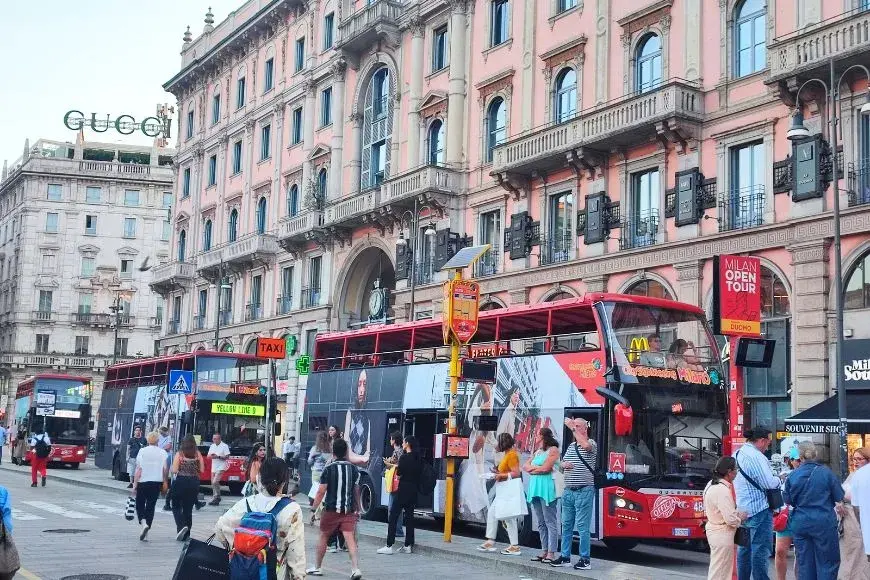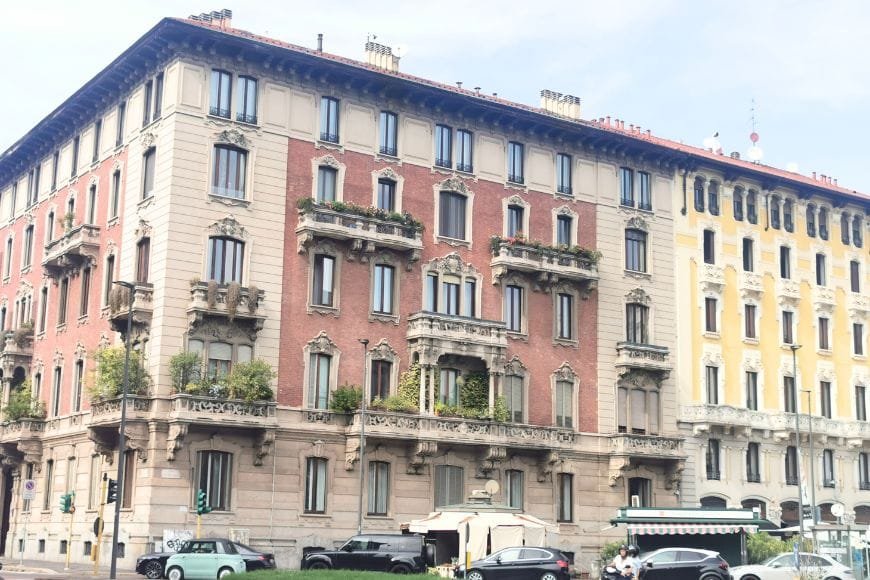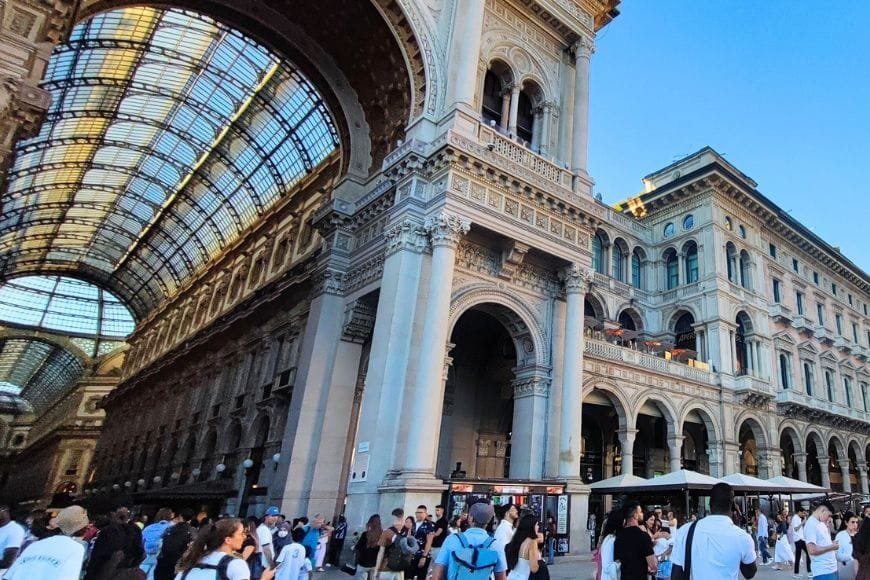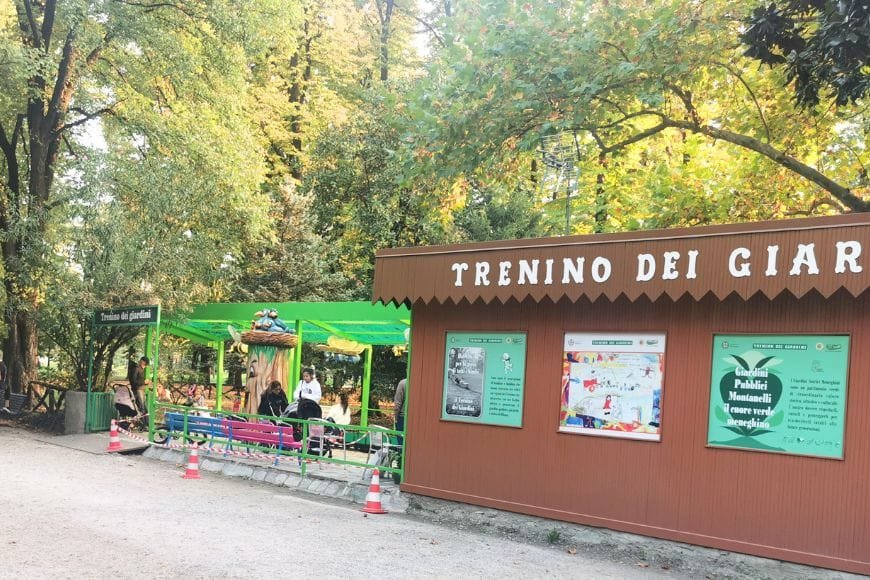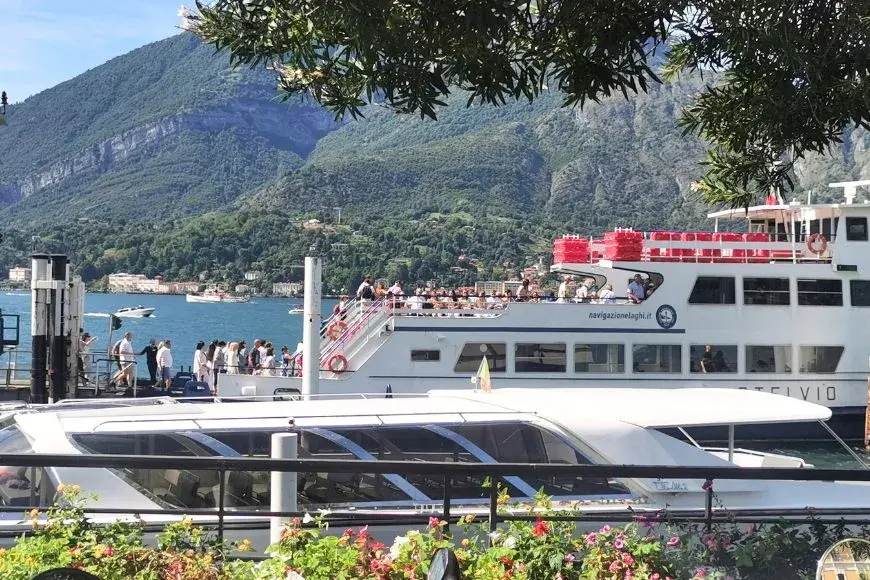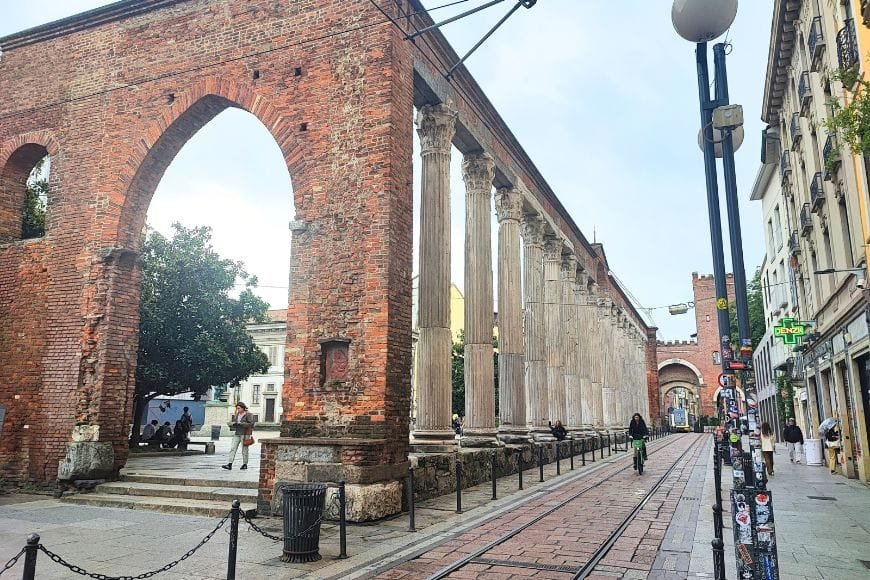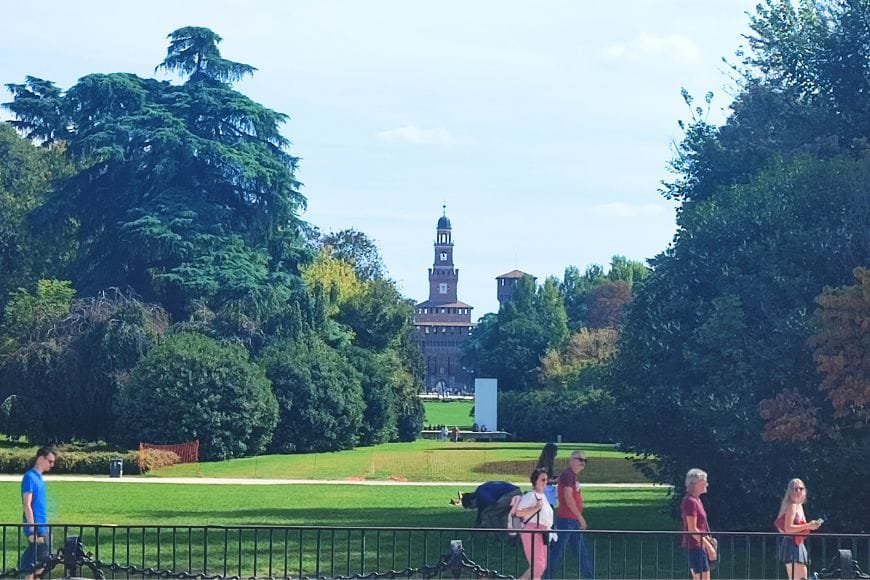Best Time to Visit Italy (2025): Complete Seasonal Guide

by Abu | Last Updated December 20, 2025
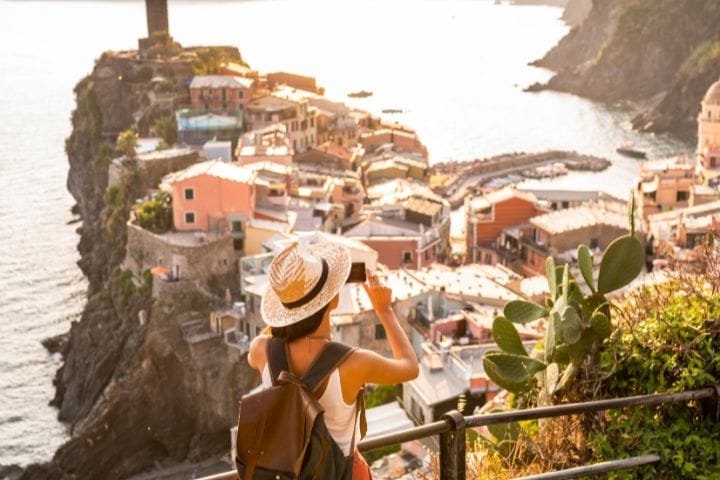
After living in Milan for over twenty years and traveling extensively throughout Italy, I’ve learned that choosing the wrong time to visit Italy can genuinely make or break your experience. Just last August, I watched tourists struggling through Rome’s scorching heat while locals had escaped to the coast.
Here’s what most people don’t realize about Italy: we’re not just one destination with uniform weather. You can ski in the Dolomites while people swim in Sicily on the same winter day. The temperature difference between my home in Milan and southern Puglia in January can be 15°C – it’s like visiting different countries entirely.
Seasonal shifts bring more than just weather changes: August brings Ferragosto when half the country shuts down for vacation, spring blooms in Tuscany, fall harvests and truffle hunts, and busy winter’s Christmas markets up north, while the south stays pleasantly crowd-free.
The difference between visiting during peak season versus shoulder season isn’t just about money – it’s about having completely different experiences. Fighting crowds at the Trevi Fountain versus chatting with local artisans in quiet Roman neighborhoods? I’ve guided friends through both, and honestly, they’re like visiting different countries.
This guide will help you choose the best time to visit Italy, based on your interests, budget, and crowd tolerance, with insider knowledge from someone who has experienced every Italian season.
Planning a trip to Italy? Check out our Italy Travel Guide to help you plan the perfect Italian vacation of your dreams
When is the Best Time to Visit Italy?
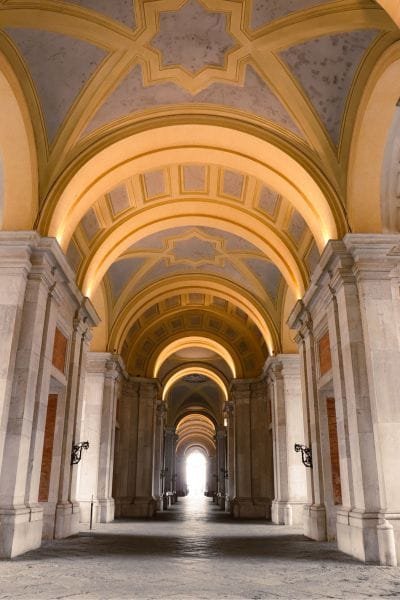
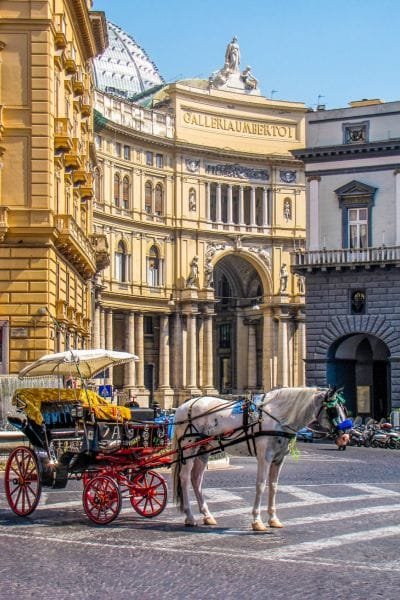
The best time to visit Italy is during spring (April–June) and early fall (September–October), when the weather is mild, crowds are manageable, and you’ll experience Italy at its most comfortable and authentic.
Living in Milan, I consistently recommend these shoulder seasons to visiting friends because they offer the perfect balance of pleasant weather, reasonable prices, and genuine cultural experiences without the overwhelming tourist crowds of summer. Let’s break this down:
Italy Seasonal Comparison: At-a-Glance Guide
| Season | Conditions | Best For | Price Range |
|---|---|---|---|
| 🌸 Spring (Mar–May) | Mild & blooming (15–22 °C / 59–72 °F), moderate crowds | Cities, countryside exploration | Mid-range |
| ☀️ Summer (Jun–Aug) | Hot & sunny (25–35 °C / 77–95 °F), high crowds | Beaches, outdoor festivals | Highest |
| 🍇 Fall (Sep–Nov) | Warm & colorful (18–25 °C / 64–77 °F), low–moderate crowds | Wine tours, food experiences | Mid-range |
| ❄️ Winter (Dec–Feb) | Cool to cold (5–15 °C / 41–59 °F), low crowds | Skiing, Christmas markets | Lowest |
Why spring and fall work so well:
- Perfect temperatures for walking through cities and countryside
- Shoulder season pricing on accommodation and flights
- Local festivals and seasonal experiences are at their peak
- Comfortable sightseeing without summer heat or winter cold
- Authentic atmosphere with manageable tourist numbers
From my experience living here, May and September are particularly magical months – warm enough for outdoor dining and long walks, but cool enough that you won’t melt exploring Rome’s ancient streets or climbing Florence’s cathedral dome. Plus, you’ll actually enjoy chatting with locals who aren’t overwhelmed by peak season tourist demands.
What Is the Best Time to Visit Italy? Month-by-Month Breakdown
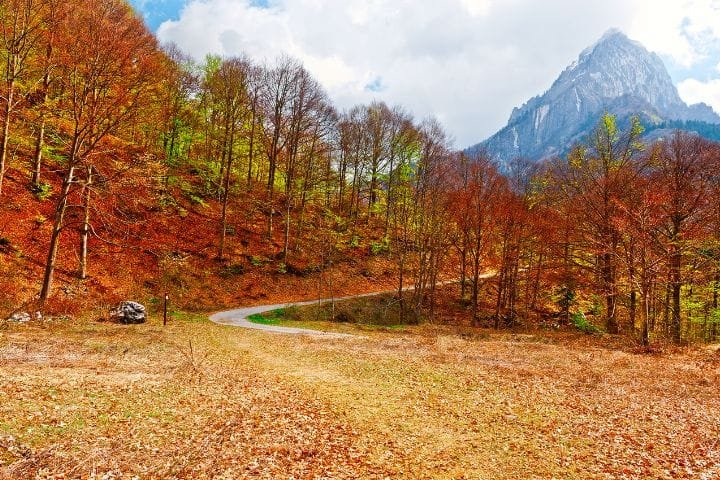
Through experiencing every Italian season multiple times, here’s what you can realistically expect each month throughout the country. The variation between northern and southern regions can be dramatic, so understanding monthly patterns helps plan appropriately for your specific destinations.
Italy in January: Quiet Cities, Snowy Mountains
Factor | Details |
|---|---|
Weather | Cold in the north (2–8 °C), mild in the south (8–15 °C) |
Crowds | Minimal – you’ll have major attractions almost to yourself |
Best For | Winter sports in the Alps, authentic local experiences, museum visits |
January in Italy feels like the country takes a collective breath after holiday celebrations. In Milan, we bundle up for foggy mornings but enjoy cozy trattorias without reservations. Southern cities like Naples and Palermo remain surprisingly pleasant for sightseeing, while ski resorts in the Dolomites hit their stride.
Italy in February: Carnival Magic, Peak Skiing
Factor | Details |
|---|---|
Weather | Cool in the north (3–10 °C), mild in the south (9–15 °C) |
Crowds | Low to moderate, busier in Venice during Carnival |
Best For | Venice Carnival celebrations, Valentine’s getaways, winter sports in the Alps |
February brings Venice’s world-famous Carnival – absolutely magical, but expect serious crowds and inflated prices. Meanwhile, the rest of Italy remains blissfully quiet. This is when I take visiting friends to Rome for authentic experiences without tourist buses.
Italy in March: Spring Awakening
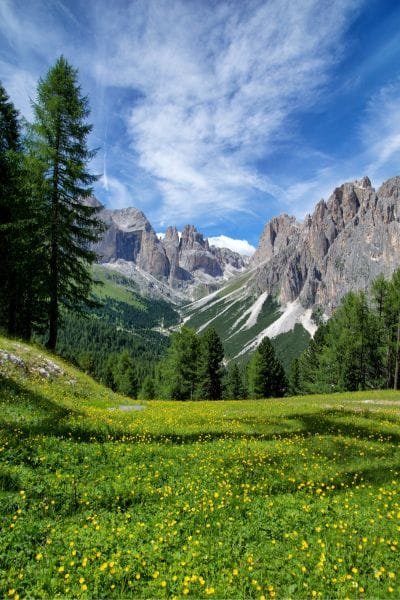
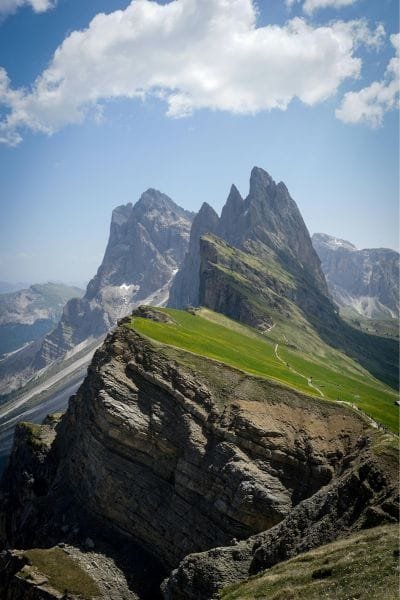
Factor | Details |
|---|---|
Weather | Mild in the south (12–18 °C), cooler in the north (8–14 °C) |
Crowds | Low to moderate, increasing toward Easter |
Best For | Early spring blooms, cultural city trips, fewer tourists |
March marks the real beginning of travel season. Wildflowers start appearing in Tuscany, Rome’s weather becomes pleasant for walking, and accommodation prices remain reasonable. Pack layers – Milan can be chilly while Sicily feels like spring.
Italy in April: Easter Crowds, Countryside Bloom
Factor | Details |
|---|---|
Weather | Pleasant (15–20 °C) across most regions |
Crowds | Moderate, higher during Easter week |
Best For | Easter celebrations, countryside wildflowers, sightseeing in mild weather |
April is genuinely one of my favorite months for visitors. The weather’s perfect for long walks through Rome or Florence, Tuscan countryside explodes with color, and outdoor restaurant terraces reopen. Just avoid Easter week if you hate crowds – it’s genuinely intense.
Italy in May: Peak Perfection
Factor | Details |
|---|---|
Weather | Warm but comfortable (18–25 °C) |
Crowds | Moderate, increasing toward summer |
Best For | Coastal drives, hiking, outdoor dining, countryside stays |
If I could only choose one month for friends to visit Italy, it would be May. Perfect temperatures for any activity, spring festivals throughout the country, longer days, and that magical light that makes every photo look professional. From Milan to Sicily, May delivers consistently excellent weather.
Italy in June: Summer Begins
Factor | Details |
|---|---|
Weather | Warm to hot (20–28 °C) |
Crowds | High in tourist hotspots, moderate elsewhere |
Best For | Beaches, festivals, summer outdoor events |
June offers summer warmth without July’s intensity. Beach season officially begins, outdoor concerts and festivals launch, and days stretch until 9 PM in northern Italy. Prices start climbing.
Italy in July: Peak Heat, Peak Crowds
Factor | Details |
|---|---|
Weather | Hot (25–35 °C), very hot in the south |
Crowds | Peak season, especially along coasts and major cities |
Best For | Beach holidays, vibrant nightlife, summer festivals |
July tests your heat tolerance, especially in Rome and Florence, where temperatures regularly hit 35°C+. This is when smart Italians head to the mountains or the beaches. If you must visit cities, start early in the morning and take serious afternoon breaks.
Italy in August: Ferragosto Shutdown
Factor | Details |
|---|---|
Weather | Very hot (25–35 °C) |
Crowds | Peak in coastal areas, cities quieter mid-month during Ferragosto |
Best For | Coastal escapes, summer festivals, relaxing by the sea |
August, around Ferragosto (August 15), sees many Italian businesses close for vacation. Cities are empty of locals but filled with tourists. It’s surreal but can be magical in quieter destinations. Beach towns come alive, and mountain areas offer cool escapes.
Italy in September: Golden Season Returns
Factor | Details |
|---|---|
Weather | Warm (20–26 °C), cooler evenings |
Crowds | Moderate, ideal balance between summer buzz and fewer tourists |
Best For | Wine harvest, countryside drives, late summer beaches |
September might be Italy’s absolute best month. Summer heat fades, harvest season begins in wine regions, cultural events resume, and locals return refreshed and welcoming. From my Experience, September visitors leave happiest.
Italy in October: Fall Colors, Truffle Season
Factor | Details |
|---|---|
Weather | Mild (15–22 °C), cooler in the north |
Crowds | Low to moderate |
Best For | Truffle festivals, autumn foliage, food and wine tours |
October delivers stunning fall colors, truffle festivals in Umbria and Piedmont, perfect temperatures for city walking, and that incredible golden hour light. Restaurants focus on seasonal specialties, and locals have time for genuine conversations.
Italy in November: Quietest Month
Factor | Details |
|---|---|
Weather | Cooler (8–15 °C), more rain in the north |
Crowds | Very low |
Best For | Cultural city trips, budget travel, authentic local experiences |
November gets overlooked, but offers incredible value. Yes, northern Italy can be foggy and rainy, but southern regions remain pleasant. This is when you’ll discover Italy without tourist filters – authentic, affordable, and surprisingly welcoming.
Italy in December: Christmas Magic
Factor | Details |
|---|---|
Weather | Cold in the north (2–8 °C), mild in the south (8–15 °C) |
Crowds | Moderate during Christmas & New Year, low earlier in the month |
Best For | Christmas markets, festive city trips, skiing in the Alps |
December transforms Italy into a winter wonderland, especially in northern cities with Christmas markets. Rome and Florence become romantic with holiday decorations, while ski season begins in earnest. Perfect for couples seeking authentic holiday experiences.
When Is the Least Crowded Time to Visit Italy? (Season by Season)
The least crowded months to visit Italy are November to early March (excluding Christmas and New Year’s). During this time, tourist numbers drop significantly, major attractions are quieter, and travel costs are generally lower, though northern regions can be cold and wet.
Understanding when to expect overwhelming crowds versus when you’ll have Italy practically to yourself makes an enormous difference in your travel experience and budget.
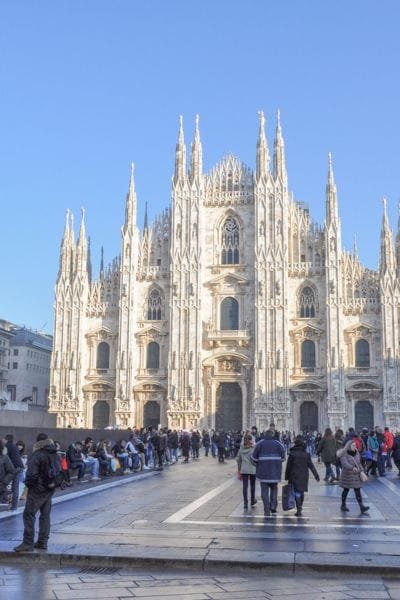
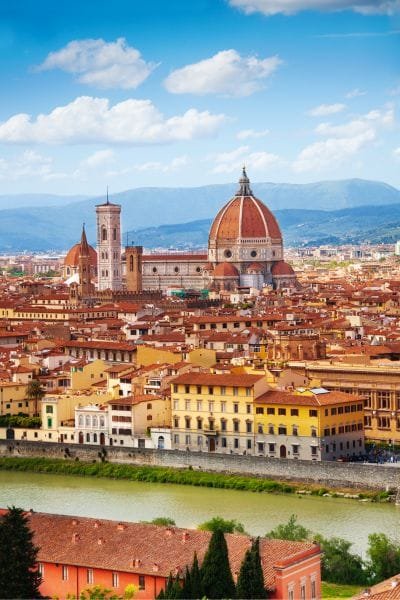
Here’s what I’ve observed about tourism patterns and crowd flow throughout Italy over the years:
Peak Season in Italy (Brace Yourself): July-August
Crowd Level: 🔴 Maximum Intensity
What to expect: Long lines everywhere, reservations essential 2+ months ahead, inflated prices, tourist-focused service
This is when I tell Milanese friends to avoid Rome and Florence entirely. Popular attractions become human sardine cans, restaurant prices double, and locals either flee to vacation spots or become understandably grumpy dealing with overwhelming tourist numbers. If you must visit during peak season, book everything months ahead and start sightseeing at 8 AM.
High Season in Italy (Busy but Manageable): April-June, September
Crowd Level: 🟡 Moderate to High
What to expect: Popular attractions busy but tolerable, advance bookings recommended, higher prices but reasonable
These months offer the best balance between good weather and manageable crowds. You’ll encounter tour groups and need restaurant reservations, but locals remain welcoming, and prices don’t reach peak season insanity. This is when I actually enjoy taking visitors around – busy enough for energy, not so crowded you can’t move.
Shoulder Season in Italy (Sweet Spot): March, October-November
Crowd Level: 🟢 Low to Moderate
What to expect: Tourist sites pleasantly busy, easy restaurant bookings, reasonable prices, authentic local interactions
Honestly, these might be my favorite months for visitors. You’ll encounter other travelers, but you won’t feel overwhelmed. Locals have time for genuine conversations, museums aren’t packed, and you can often get same-day restaurant reservations at excellent places.
Low Season (Nearly Empty): December-February
Crowd Level: 🔵 Minimal Crowds
What to expect: Major attractions nearly empty, walk-in availability everywhere, lowest prices, authentic local experiences
Winter months offer Italy at its most authentic. Yes, some coastal attractions close and the weather can be unpredictable, but you’ll experience Italian daily life without tourist filters. I’ve walked through empty Colosseum corridors in January that felt almost mystical.
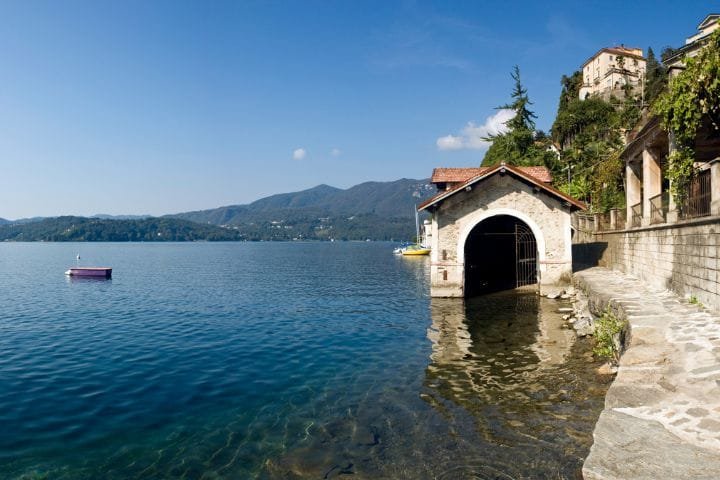
Get our FREE Italy
Travel Guide
E-Book
This printable guide is your ultimate companion for exploring Italy, with insider tips, detailed itineraries, transportation advice, must-see attractions, and more.
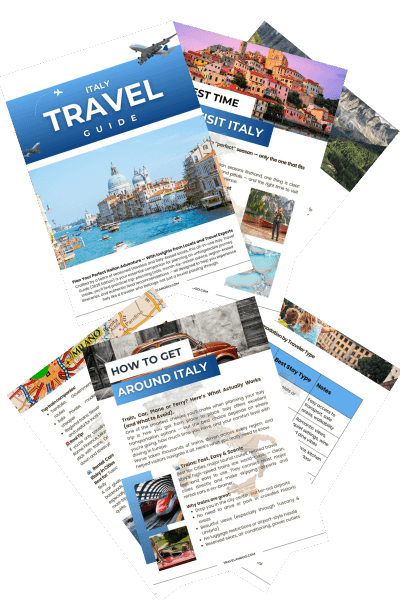
Special Event Crowd Warnings
Easter Week (March/April): Absolutely insane crowds throughout the country, especially Rome. Hotels book out months ahead, prices skyrocket, and major attractions become nearly unbearable. Avoid unless you specifically want the Easter experience.
Venice Carnival (February): The city transforms into a beautiful but completely overcrowded festival. Accommodation prices triple, advance bookings essential, but genuinely magical if you’re prepared for crowds.
August 15 (Ferragosto): Paradoxical situation – many Italian businesses close but tourist crowds remain. Cities feel surreal with locals gone but international visitors everywhere.
Summer Weekends: Friday-Sunday sees domestic Italian tourism spike, especially in coastal areas and popular destinations near major cities.
Regional Crowd Variations
Most Crowded Destinations Year-Round: Rome, Venice, Florence, Amalfi Coast, Cinque Terre
My advice: Visit these during shoulder seasons or very early morning
Moderately Crowded: Milan, Naples, Lake Como, Tuscany wine regions Manageable most times, avoid peak summer
Hidden Gems with Minimal Crowds: Puglia, Le Marche, Umbria hill towns, northern mountain regions. Perfect for authentic experiences any time
From my experience guiding friends, the happiest travelers are those who either embrace peak season crowds as part of the energy or choose shoulder seasons for more authentic experiences. The worst experiences happen when people expect empty attractions during high season or assume everything’s closed during low season.
Best Time to Visit Italy by Region
What most visitors don’t realize is that our country’s incredible geographic diversity means timing varies dramatically by region. What works perfectly in the north can be miserable in the south, and vice versa, so planning regionally becomes essential for optimal experiences.
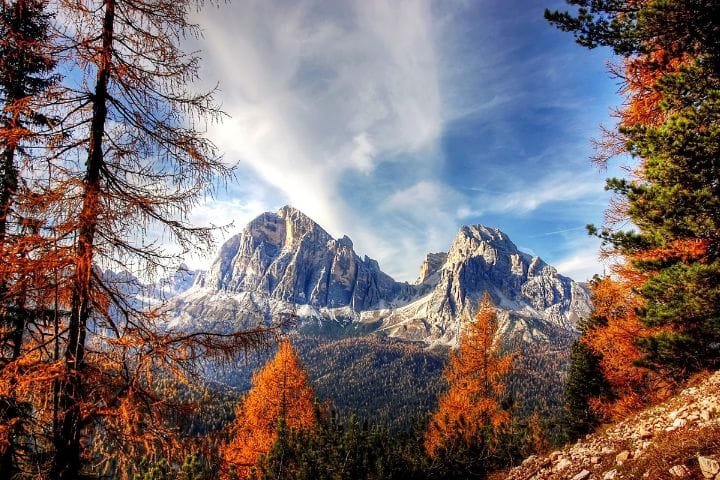
Best Time to Visit Northern Italy (Milan, Venice, Lake Como & Dolomites)
Best Overall Time: April-October
Peak Season: June-September (lakes and mountains)
Avoid: November-February (except for skiing)
Spring (April-May): Absolutely perfect for cities like Milan and Venice. Lakes begin warming up, countryside blooms, and you’ll avoid summer crowds. This is when we go to Lake Como – warm enough for boat rides, not yet crowded with summer tourists.
Summer (June-August): Peak season for lakes and mountain activities. Como and Garda become absolutely stunning, but expect crowds and higher prices. Milan can be surprisingly hot and humid – many locals escape to the mountains.
Fall (September-October): My personal favorite time for northern Italy. Perfect temperatures for city exploration, lakes still warm for swimming, mountain hiking is ideal, and those incredible autumn colors around the lakes.
Winter (December-March): Cities like Milan become foggy and cold, but this transforms into a skiing paradise in the Dolomites. Venice during winter fog is magical but chilly. Christmas markets in Alto Adige are genuinely wonderful.
Best Time to Visit Central Italy (Rome, Florence, Tuscany, Umbria)
Best Overall Time: March-June, September-November
Peak Magic: April-May, September-October
Avoid: July-August (brutal heat in cities)
Spring (March-May): Ideal for everything central Italy offers. Rome and Florence are perfect for walking, the Tuscan countryside explodes with wildflowers, and temperatures are comfortable for all-day sightseeing. Easter brings crowds but also an incredible atmosphere.
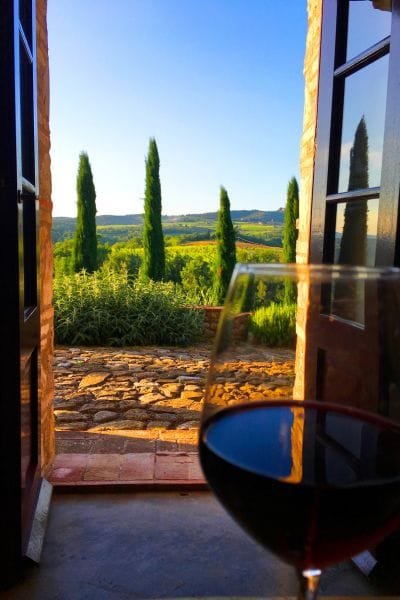
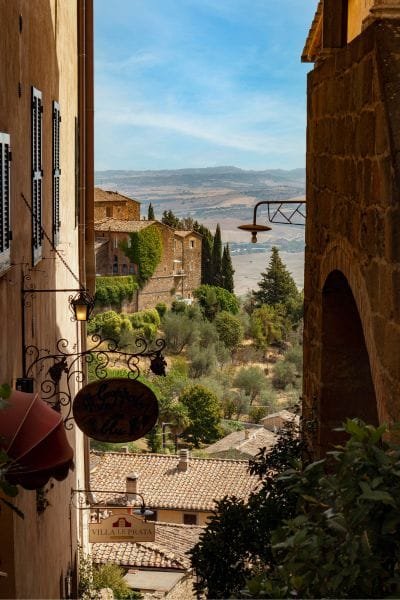
Summer (June-August): Honestly, July-August in Rome and Florence can be genuinely punishing. If you must visit, start sightseeing at dawn, take serious siesta breaks, and save activities for the evening. Tuscany becomes quite beautiful in early morning and late afternoon.
Fall (September-November): Absolutely magical season. Harvest time in Chianti and Brunello regions, perfect temperatures for city exploration, incredible light for photography, and local festivals throughout Tuscany and Umbria.
Winter (December-February): Cities remain surprisingly pleasant for sightseeing, though shorter days limit activities. Rural areas can be cold and quiet – some agriturismos close, but authentic experiences abound.
When to Visit Southern Italy? (Naples, Amalfi Coast, Puglia, Calabria)
Best Overall Time: March-May, September-November
Beach Season: June-October
Avoid: July-August (extreme heat), December-February (many closures)
Spring (March-May): Absolutely perfect for southern exploration. Naples is ideal for food tours, Amalfi Coast is warming up but not crowded, Puglia countryside is gorgeous with wildflowers. This is when I recommend southern Italy most enthusiastically.
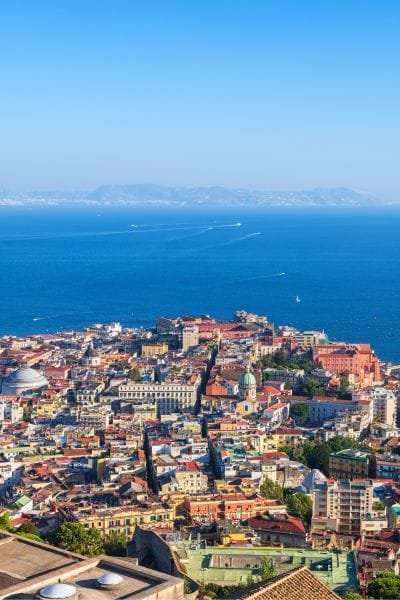

Summer (June-August): Beach season at its peak, but intense heat inland. Coastal areas remain pleasant with sea breezes, but cities like Naples become genuinely challenging. Many locals take afternoon naps – follow their lead.
Fall (September-November): Outstanding season for southern Italy. Sea is still warm for swimming, crowds diminish, perfect temperatures for exploring cities and countryside. October might be the absolute best month for the entire South.
Winter (December-February): Mild compared to northern Italy, but many coastal businesses close. Naples and major cities remain active, but Amalfi Coast becomes quite quiet. Good for authentic experiences, but limited activities.
Best Time to Visit Italian Islands (Sicily, Sardinia)
Best Overall Time: May-June, September-October
Swimming Season: June-October
Year-Round Option: Sicily (milder winters)
Sicily: Genuinely pleasant year-round destination. Summers can be hot, but coastal breezes help. Spring brings incredible wildflowers, fall offers perfect temperatures, and winter remains mild enough for sightseeing. I’ve enjoyed Sicily visits in every season.
Sardinia: More seasonal than Sicily. Summer brings perfect beach weather, but crowds. Spring and fall offer ideal conditions for both beaches and inland exploration. Winter can be quite cool and windy, with limited tourist infrastructure.
Regional Temperature Guide
Northern Italy Averages:
- Spring: 15-20°C (59-68°F)
- Summer: 25-30°C (77-86°F)
- Fall: 10-20°C (50-68°F)
- Winter: 0-10°C (32-50°F)
Central Italy Averages:
- Spring: 18-23°C (64-73°F)
- Summer: 28-35°C (82-95°F)
- Fall: 15-25°C (59-77°F)
- Winter: 8-15°C (46-59°F)
Southern Italy/Islands Averages:
- Spring: 20-25°C (68-77°F)
- Summer: 30-38°C (86-100°F)
- Fall: 18-28°C (64-82°F)
- Winter: 12-18°C (54-64°F)
My Personal Regional Recommendations
For First-Time Visitors: Focus on central Italy during April-May or September-October. Perfect weather, manageable crowds, incredible experiences.
For Repeat Visitors: Explore regional variations – northern lakes in summer, southern coast in spring/fall, islands almost anytime.
For Road Trips: Spring and fall offer perfect driving conditions with comfortable temperatures and stunning scenery throughout all regions.
From my experience, the biggest mistake visitors make is assuming all of Italy has the same climate and timing needs. Plan regionally, and you’ll have much better experiences tailored to each area’s unique seasonal character.
Best Time for Italy Road Trips
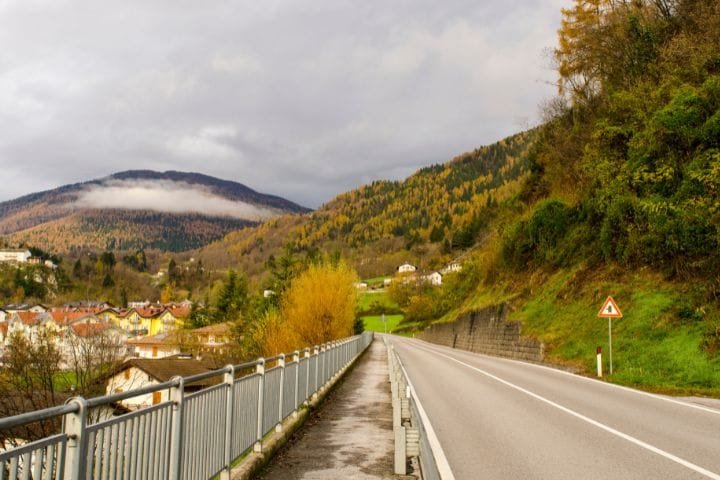
Having driven extensively throughout Italy from my Milan base and helped countless friends plan road trips across our diverse regions, I can tell you that timing makes an absolutely massive difference in your driving experience. The same route can be magical in May and miserable in August.
Italy Spring Road Trips (April-June): Peak Perfection
Best Routes: Tuscany wine country drive, Northern Italy lakes itinerary, Umbrian hill towns
Why Spring Works: Perfect temperatures, blooming countryside, comfortable driving conditions
Tuscany in Spring: This is when I consistently recommend the classic Florence-Siena-Chianti triangle road trip. Wildflowers cover rolling hills, temperatures are perfect for wine tasting stops, and those iconic cypress-lined roads look absolutely magical. May is particularly stunning when everything’s green and blooming.
Northern Lakes Circuit: Starting from Milan, the Lake Como-Lake Garda loop becomes incredible in late spring. Mountain passes fully open, lake towns come alive, and driving along shoreline roads with windows down is pure joy. Plus, accommodation prices haven’t hit summer peaks yet.
Practical Spring Tips:
- Pack layers – mountain weather can change quickly
- Book accommodations ahead for Easter week
- Mountain passes may still have snow restrictions in early April
- Perfect photography lighting throughout the day
Italy Summer Road Trips (June-August): Mountains and Coasts
Best Routes: Dolomites mountain passes, Amalfi Coast (early morning driving), Northern mountain scenic drives
Challenges: Intense heat in central Italy, heavy traffic, peak season crowds
Dolomites Adventure: Summer opens the high mountain passes for spectacular Alpine driving. The Great Dolomites Road becomes accessible, and rifugio mountain huts provide incredible overnight stops. This is genuinely some of Europe’s most dramatic mountain driving.
Amalfi Coast Strategy: If you must drive the Amalfi Coast in summer, start before dawn. The coastal road becomes impossibly crowded by 10 AM, but sunrise drives offer stunning views without traffic stress. Alternatively, consider the bus or ferry options.
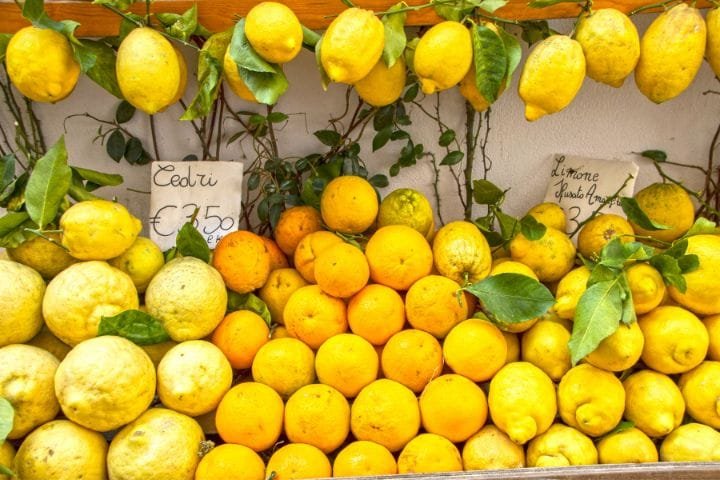
Summer Survival Tips:
- Start driving very early in the morning (6-7 AM)
- Plan serious siesta stops during peak heat (1-4 PM)
- Book everything months ahead
- Keep plenty of water and sunscreen
- Avoid central Italy cities during the hottest hours
Fall Road Trips (September-November): Golden Season
Best Routes: Wine regions during harvest, southern Italy exploration, anywhere with autumn colors
Why Fall Excels: Perfect temperatures, harvest season activities, stunning autumn scenery
Harvest Season Magic: September through October transforms wine regions into an absolute paradise. From my experience, driving through Chianti during harvest season offers incredible experiences – spontaneous winery visits, harvest festival participation, and that incredible golden light that makes every photo look professional.

Southern Italy Discovery: Fall becomes perfect for exploring Puglia, Basilicata, and Calabria regions. Temperatures drop to comfortable levels, summer crowds disappear, and you’ll discover authentic southern Italian culture without tourist filters.
Fall Road Trip Advantages:
- Perfect temperatures for all-day driving
- Harvest festivals and seasonal food experiences
- Stunning autumn colors in northern regions
- Lower accommodation prices than summer
- Locals are more relaxed and welcoming after summer tourist season
Italy Winter Road Trips (December-February): Alpine Adventures
Best Routes: Christmas market circuits, thermal spa tours, southern Italy exploration
Special Considerations: Mountain driving requires winter experience, shorter daylight hours
Christmas Market Circuit: Northern Italy’s Christmas markets create magical winter road trip opportunities. From Milan, you can easily visit markets in Bolzano, Trento, and smaller Alpine towns. Just pack winter driving skills and warm clothes.
Southern Winter Escape: While northern Italy gets cold, southern regions remain surprisingly pleasant for winter road trips. Sicily and Puglia offer mild temperatures and authentic experiences without crowds.
Regional Road Trip Timing
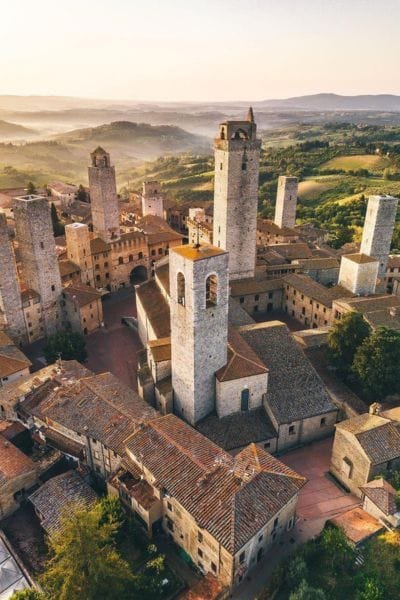
Tuscany & Umbria:
- Best: April-May, September-October
- Avoid: July-August (intense heat), winter months (some rural roads challenging)
Northern Lakes & Mountains:
- Best: May-September (mountain passes open)
- Winter: Skiing access, but challenging driving conditions
Amalfi Coast & Southern Italy:
- Best: April-June, September-November
- Summer: Possible but very crowded and hot
- Winter: Many coastal businesses closed
Sicily & Sardinia:
- Best: April-June, September-November
- Year-round: Sicily remains accessible, Sardinia is more seasonal
Practical Road Trip Planning Tips
Documentation: International Driving Permit required, comprehensive insurance essential
ZTL Zones: Italy ZTL zones in historic city centers restrict car access – research your route carefully to avoid expensive fines
Tolls: Budget approximately €0.07 per kilometer for toll roads in Italy
Fuel: Fuel cost in Italy is more expensive than US prices, plan fuel stops in advance for remote areas
Parking: Historic centers often have limited or expensive parking – research accommodation parking options
My Personal Road Trip Recommendations
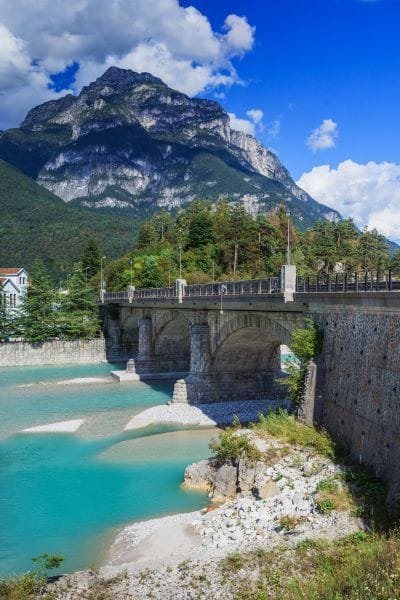
First Italy Road Trip: Tuscany in May – classic, beautiful, manageable, perfect introduction to Italian road trip culture
Advanced Road Trippers: Dolomites in summer for dramatic mountain scenery, or Puglia in fall for authentic southern experiences
Couples: Wine region tours during harvest season offer romantic stops with incredible food and wine experiences
Families: Northern lakes circuit with plenty of swimming and outdoor activity stops
The key here is matching your route and timing to your interests and driving comfort level. Italy rewards road trippers with incredible spontaneous discoveries, but proper seasonal planning makes the difference between magical memories and stressful experiences.
Best Time to Visit Italy Based on Your Interests
Through years of helping friends match their travel passions to perfect timing, I’ve learned that Italy offers completely different experiences depending on when you visit and what drives your travel dreams. Aligning your timing with your primary interests creates far better memories than just choosing “good weather” months.
Italian Art & Museums: Spring and Fall (April-May, September-October)
Why These Seasons Work:
- Comfortable temperatures for museum walking and city exploration
- Fewer crowds mean actually seeing masterpieces without fighting for views
- Perfect lighting for photography inside churches and galleries
- Locals more relaxed and willing to share insider cultural knowledge
From my experience, visiting the Uffizi or Vatican Museums during shoulder seasons transforms the experience completely. Instead of being herded through packed galleries, you can actually contemplate Michelangelo’s work properly. Plus, afternoon light streaming through church windows creates magical photography opportunities that summer crowds would ruin.
Avoid: July-August when museum crowds become overwhelming and summer heat makes city walking miserable.
Italian Food & Wine: Fall (September-November)
Peak Season: September-October for harvest experiences
Why Fall Dominates: Harvest season, truffle hunting, seasonal specialties, perfect weather for food tours
Fall in Italy becomes a food lover’s paradise that most tourists completely miss. September through November brings grape harvests in Tuscany and Piedmont, white truffle season in Alba, chestnut festivals throughout central Italy, and those incredible new wines that haven’t yet traveled internationally.
I consistently take food-obsessed visitors to Tuscany in October when they can participate in actual grape harvests, visit family wineries during crushing season, and experience those magical harvest dinners under stars with wine straight from fermentation tanks. It’s impossible to replicate these authentic food experiences during any other season.
Regional Food Timing:
- Tuscany: September-October for the Chianti harvest
- Piedmont: October-November for truffle season and Barolo harvest
- Umbria: October for truffle hunting and olive oil pressing
- Sicily: September for late harvest wines and still-warm weather
Italian Beaches: Summer (June-September)
Peak Season: July-August for warmest water
Sweet Spot: June and September for good weather, fewer crowds Extended Season: May-October in southern regions
Northern Beaches (Riviera, Lakes): June-August offers the warmest water temperatures, though expect crowds at popular spots like Cinque Terre. Lake swimming becomes pleasant from June through September.
Southern Beaches (Amalfi, Puglia, Sicily): Extended season from May through October. September and early October offer perfect conditions – still warm water, fewer crowds, ideal weather for coastal exploration.
Personal Beach Recommendations:
- Avoid: Peak August crowds unless you love busy beach scenes
- Best Value: June and September offer the perfect balance
- Hidden Gems: Puglia and Basilicata coastlines remain less crowded even in summer
Get our FREE Italy
Travel Guide
E-Book
This printable guide is your ultimate companion for exploring Italy, with insider tips, detailed itineraries, transportation advice, must-see attractions, and more.

Italy Hiking & Nature: Late Spring and Early Fall
Perfect Conditions: Comfortable temperatures, clear skies, accessible trails
Peak Season: June-September for high mountain trails
Special Considerations: Weather can change rapidly in the mountains
Dolomites: June through September when high mountain trails become accessible and rifugio mountain huts operate fully. July-August brings peak crowds but also the most reliable weather.
Tuscany & Umbria: April-May and September-October offer perfect temperatures for countryside hiking without summer heat. Spring brings wildflowers, and fall delivers stunning colors.
Coastal Hiking: May-June and September-October provide ideal conditions for coastal trail walking without summer crowds or winter storms.
From personal hiking experience throughout Italy, weather windows in mountains can change dramatically, so always check local conditions and pack appropriate layers regardless of season.
Skiing: December-March
Peak Season: January-February for the best snow conditions
Shoulder Season: December and March for fewer crowds, variable conditions
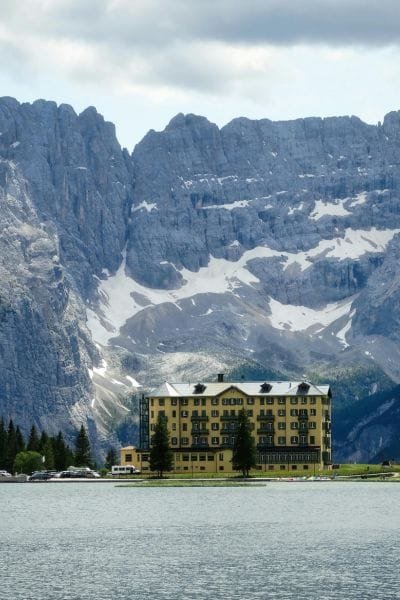
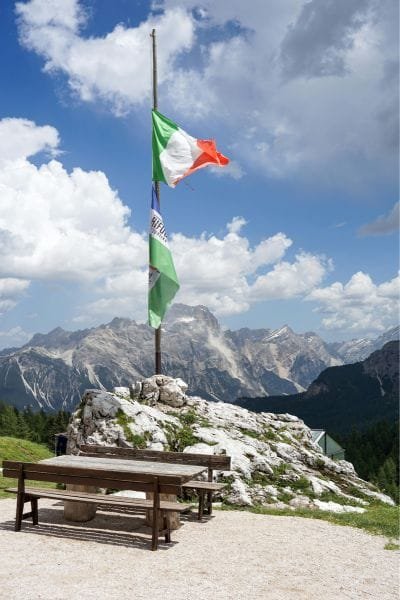
Dolomites: World-class skiing with incredibly dramatic mountain scenery. January-February offers the most reliable snow, though December and March can provide excellent conditions with fewer crowds and lower prices.
Other Ski Areas: Val d’Aosta and Lombardy Alps offer excellent skiing closer to Milan with good transportation connections.
Photography: April and October
Why These Months Excel:
- Perfect “golden hour” lighting throughout the day
- Fewer tourists blocking iconic shots
- Comfortable temperatures for extended outdoor photography
- Seasonal changes create unique visual opportunities
April Photography: Spring blooms, perfect light, comfortable shooting conditions
October Photography: Autumn colors, harvest scenes, incredible atmospheric conditions
As someone who has watched countless photographer friends work throughout Italy, April and October consistently deliver the best combination of lighting, weather, and access to locations without crowds.
What Are the Best Months for Budget Travel in Italy?
The cheapest months to travel in Italy are November through early March (excluding Christmas and New Year’s). During this low season, flights and hotels often cost 30–50% less, popular attractions are quieter, and you can find great deals on off-season tours, especially in major cities.
Lowest Prices: January-February (excluding Christmas/New Year)
Best Value: November and March for reasonable weather plus low prices Considerations: Limited hours for some attractions, weather variability
Budget Season Benefits:
- Accommodation prices 30-50% lower than peak season
- Restaurant prices return to local levels
- Transportation deals and flight discounts
- Authentic local experiences without tourist crowds
Smart Budget Timing: November offers decent weather with low prices, while March begins warming up with still-reasonable costs.
Festival & Events: Year-Round with Seasonal Peaks
Spring: Easter celebrations, Infiorata flower festivals, and outdoor concerts resume
Summer: Opera festivals (Verona, Rome), Palio di Siena, countless local festivals
Fall: Harvest festivals, truffle fairs, wine celebrations
Winter: Christmas markets, Venice Carnival, traditional holiday celebrations
My Personal Interest-Based Recommendations
First-Time Visitors: April-May for perfect balance of weather, crowds, and cultural experiences
Food Lovers: October without question – harvest season offers experiences impossible any other time
Art Enthusiasts: September-October when crowds thin but weather remains perfect for museum exploration
Beach Lovers: June or September for ideal balance of weather and reasonable crowds
Adventure Seekers: June-August for mountain access, May-June for comfortable outdoor activities
Budget Travelers: November or March for best value without sacrificing too much weather comfort
The key insight from my experience is that Italy rewards travelers who align their visit timing with their primary interests rather than just choosing “good weather” months. The most satisfied friends I’ve guided are those who experience Italy during seasons that match their passions perfectly.
When is the Worst Time to go to Italy?
The most challenging time to visit Italy is in August, when scorching heat, peak tourist crowds, and the national holiday of Ferragosto cause many businesses in cities to close. Major attractions are packed, prices are at their highest, and travel to coastal areas becomes expensive and crowded.
Here’s when to avoid – and the rare exceptions when it might be worth it anyway.
July-August: Peak Heat, Peak Chaos
Why This Period is Rough:
- Temperatures regularly exceed 35°C (95°F) in Rome and Florence
- Tourist crowds reach absolutely overwhelming levels
- Many local businesses close during Ferragosto (mid-August)
- Accommodation prices double or triple
- Locals become understandably grumpy dealing with tourist overload
The Reality: I’ve watched friends from northern climates genuinely struggle with Italian summer heat. Rome in August can hit 40°C (104°F), and those ancient cobblestones become furnaces. Combine that with massive crowds at major attractions, and sightseeing becomes survival rather than enjoyment.
August Ferragosto (August 10-20): This creates a bizarre situation where tourist crowds remain intense, but many Italian-run restaurants, shops, and services close for vacation. You’ll find plenty of tourist-focused businesses open, but authentic local experiences largely disappear.
Exceptions Worth Considering:
- Northern mountain regions offer cool escapes and peak hiking conditions
- Beach destinations come alive with summer energy (if you enjoy crowds)
- Long daylight hours (sunset after 8 PM) extend sightseeing possibilities
- Some festivals and events only happen during the summer
Easter Week: Religious Tourism Overload
Why Easter Week Becomes Intense:
- Rome sees absolutely massive pilgrimage crowds
- Hotel prices skyrocket throughout central Italy
- Popular attractions require advance reservations months ahead
- Traffic and public transport become seriously strained
From my experience living here, Easter Week transforms normally manageable Italian cities into human rivers. St. Peter’s Square becomes impossible to navigate, and even locals avoid tourist areas completely. Restaurant reservations become essential everywhere, and prices increase dramatically.
Avoid Unless: You specifically want to experience Italian Easter traditions, which are genuinely magnificent but require serious crowd tolerance and advance planning.
Venice During Carnival (Late February): Beautiful Chaos
The Carnival Contradiction:
- Absolutely magical and unique cultural experience
- Accommodation prices increase 300-400%
- City becomes completely packed with costumed crowds
- Normal sightseeing becomes nearly impossible
- Advance booking is essential for everything
Venice Carnival offers incredible photo opportunities and cultural immersion, but the city’s infrastructure struggles with crowd levels. From my visits during Carnival, movement between attractions requires serious patience, and finding authentic dining becomes challenging with tourist-focused pricing everywhere.
Worth It If: You’re specifically traveling for the Carnival experience and book everything months ahead with appropriate budget expectations.
Mid-November Through February: Variable Weather Challenges
Northern Italy Challenges:
- Milan and northern cities experience persistent fog and cold temperatures
- Many Lake Como and mountain attractions close or reduce hours significantly
- Daylight becomes limited (sunset by 5 PM in December)
- The weather can be unpredictably wet and gray
Southern Italy Considerations:
- Many Amalfi Coast hotels and restaurants close entirely
- Ferry services to islands become limited or suspended
- Beach activities are obviously impossible
- Some rural agriturismos close for the season
Exceptions That Make Winter Worthwhile:
- Christmas markets in northern regions are genuinely magical
- Authentic local experiences without tourist filters
- Dramatically lower accommodation and dining prices
- Cultural sites become wonderfully uncrowded
- Sicily and southern regions remain surprisingly pleasant
Specific Dates to Completely Avoid
August 15 (Ferragosto): National holiday when many businesses close, but tourist crowds remain – creates the worst of both worlds
Easter Sunday-Monday: Massive crowds throughout the country, especially at religious sites
New Year’s Eve in major cities: Overpriced celebrations with overwhelming crowds and safety concerns
Italian national strike days: Transportation becomes unreliable, though these are announced in advance
Regional Timing Mistakes
Amalfi Coast in Winter: Many hotels close, weather becomes unpredictable, limited transportation options
Tuscany in August: Extreme heat makes wine touring miserable, and crowds overwhelm small hill towns
Northern Lakes in Winter: Most tourist infrastructure closes, weather is often gray and cold
Sicily in Deep Summer: While manageable, intense heat limits comfortable sightseeing hours
Hidden “Avoid” Periods
Late June: School groups from across Europe descend on cultural sites before summer break
Early September: Overlapping summer crowds with early fall visitors create busy conditions
Christmas Week: Between Christmas and New Year brings high prices with unpredictable closures
When “Bad” Timing Might Work for You
Budget Travelers: Winter months offer incredible value despite weather challenges
Crowd-Averse Visitors: November-February provides authentic experiences with minimal tourist presence
Photography Enthusiasts: Winter light can be spectacular, and empty attractions create unique opportunities
Cultural Immersion Seekers: Off-season visits reveal authentic Italian daily life
Smart Alternatives to Problem Periods
Instead of August: Visit in June or September for good weather without peak crowds
Instead of Easter Week: Early May offers perfect weather with spring celebrations but manageable crowds
Instead of Peak Summer: September-October provides excellent weather with authentic cultural experiences
Instead of Deep Winter: March or November offer shoulder season benefits with reasonable weather
From my perspective, the travelers who struggle most are those unprepared for extreme weather, overwhelming crowds, or limited services during off-season. But those who plan appropriately can find incredible experiences even during traditionally “difficult” periods.
The key is honest self-assessment: if you hate crowds and heat, avoid July-August completely. If budget matters most, embrace winter challenges for dramatic savings. If you want authentic experiences, shoulder seasons provide the perfect balance.
How Much is a Trip to Italy? Cost by Season
On average, a trip to Italy costs around €1,500–€1,900 per person for one week in peak summer, €1,000–€1,500 in shoulder seasons (spring and fall), and €800–€1,100 in winter, excluding Christmas and New Year’s. Costs vary widely depending on region, travel style, and activities.
Let me give you the real numbers on how dramatically prices fluctuate throughout the year in Italy. We’re talking about 200-300% differences between peak and low seasons in some areas, which can completely transform your budget requirements.
Accommodation Pricing by Season
Peak Season (July-August): €150-400+ per night for mid-range hotels
High Season (April-June, September): €100-250 per night
Shoulder Season (March, October-November): €70-180 per night
Low Season (December-February): €50-130 per night
Real Examples from My Experience: A decent 3-star hotel in Rome’s historic center that costs €80 per night in January jumps to €280 in August for the exact same room. Lake Como hotels that charge €120 in March skyrocket to €450 during summer peak. It’s genuinely shocking how dramatic these swings become.
Regional Pricing Variations:
- Venice: Most extreme seasonal pricing – winter rooms at €60 become €350+ during summer
- Amalfi Coast: Many hotels close in winter, but open properties offer 70% discounts
- Tuscany: Agriturismo farm stays range from €40 in winter to €180+ in summer
- Sicily: Smaller seasonal variations – good value year-round
- Milan: Business travel keeps prices steadier, but still 50-100% seasonal swings
Restaurant and Dining Costs
Tourist Area Restaurants:
- Peak season: €25-40 for basic dinner, €50-80 for a nice meal
- Low season: €15-25 for a basic dinner, €30-50 for a nice meal
Local Neighborhood Restaurants (My Regular Spots):
- Remain relatively stable year-round
- Peak season might add €5-10 to meals in tourist areas
- Winter months sometimes offer special menus and promotions
Food Market and Grocery Costs:
- Remain fairly consistent throughout the year
- Summer brings peak prices for tourist-area markets
- Local markets maintain normal pricing regardless of season
From my experience eating throughout Italy, the key is getting away from immediate tourist areas where prices fluctuate wildly. Walk three blocks from major attractions, and restaurant prices often return to normal local levels even during peak season.
Transportation Seasonal Pricing
Flights to Italy:
- Summer peak: 100-200% higher than winter flights
- Shoulder seasons: 30-50% higher than winter
- Winter: Lowest prices, especially January-February
Train Travel Within Italy:
- High-speed trains: Minimal seasonal variation (smart pricing based on demand)
- Regional trains: No seasonal changes
- Advance booking provides better deals regardless of the season
Rental Cars:
- Summer: €40-80 per day for basic cars
- Winter: €20-40 per day for the same vehicles
- Peak season availability becomes a major issue
Activities and Attraction Costs
Museum and Attraction Entry:
- Generally stable pricing year-round
- Summer may require expensive skip-the-line options
- Winter sometimes offers special pricing or combined tickets
Guided Tours and Experiences:
- Peak season: €50-150+ for popular tours
- Low season: €30-80 for the same experiences
- Availability varies dramatically by season
Wine Tours and Food Experiences:
- Harvest season (fall): Premium pricing but unique experiences
- Summer: High prices due to demand
- Winter: Best value but limited availability
Seasonal Budget Comparison Examples
Rome 3-Day Trip Cost Comparison:
Peak Season (August):
- Hotel (3 nights): €800-1200
- Meals: €200-350
- Attractions: €100-150
- Transportation: €50-80
- Total: €1150-1780
Shoulder Season (May):
- Hotel (3 nights): €350-600
- Meals: €150-250
- Attractions: €100-150
- Transportation: €40-60
- Total: €640-1060
Low Season (January):
- Hotel (3 nights): €200-400
- Meals: €120-200
- Attractions: €100-150
- Transportation: €30-50
- Total: €450-800
Money-Saving Seasonal Strategies
Shoulder Season Sweet Spots:
- Late May: Great weather before peak pricing kicks in
- Early October: Perfect conditions with falling prices
- March: Reasonable weather, significantly lower costs
Low Season Value Maximization:
- January-February: Deepest discounts, authentic experiences
- November: Decent weather in the south, dramatic savings
- December (avoid Christmas week): Good deals with holiday atmosphere
Peak Season Survival Tips:
- Book 6+ months ahead for any reasonable pricing
- Consider staying outside city centers for dramatic savings
- Eat lunch at restaurants offering fixed-price menus
- Use public transport instead of taxis during busy periods
Regional Cost Variations by Season
Most Expensive Seasonal Swings:
- Venice and Amalfi Coast: 300-400% price increases peak vs. low season
- Tuscany wine regions: 200-250% increases during harvest season
- Northern lakes: 250-300% summer premium
Most Stable Year-Round Pricing:
- Sicily: Moderate seasonal variations
- Southern Italy generally: Smaller price swings than north
- Major business cities (Milan): More consistent due to year-round demand
Hidden Seasonal Costs
Summer Hidden Expenses:
- Air conditioning surcharges at some hotels
- Higher parking fees in tourist areas
- Premium pricing for beach club access
- Reservation fees for popular restaurants
Winter Savings Opportunities:
- Longer stays are often discounted significantly
- Restaurant wine selections at regular prices
- Free heating is typically included
- Museum passes provide better value with more time
Smart Booking Strategies by Season
Peak Season Booking:
- Reserve 6-12 months ahead for reasonable rates
- Consider package deals that lock in pricing
- Book refundable rates given weather/crowd uncertainties
Shoulder Season Booking:
- 2-3 months advance provides a good selection and pricing
- Last-minute deals are occasionally available
- Flexible dates can provide significant savings
Low Season Booking:
- Last-minute bookings often provide excellent deals
- Many properties offer extended stay discounts
- Flexible cancellation policies are common
From my experience helping friends navigate Italian seasonal pricing, the travelers who save most successfully are those who either fully embrace shoulder seasons or plan far enough ahead for peak season to secure reasonable rates. The worst financial experiences happen when people book popular destinations during peak periods without advance planning – that’s when you encounter genuine price shock.
FAQs on The Best Time to Visit Italy
When is the cheapest time to go to Italy?
January through February offers the lowest prices for flights, accommodation, and activities, with savings of 50-70% compared to peak season. November and March provide excellent value with more predictable weather.
When is the hottest month in Italy?
August is typically the hottest month throughout Italy, with temperatures regularly exceeding 35°C (95°F) in central cities like Rome and Florence. July runs a close second.
When is the off-season in Italy?
November through March represents true off-season in most Italian regions, with the lowest crowds and prices. However, winter weather varies dramatically by region.
Is May or September better for Italy?
Both months are excellent, but September edges out May for overall Italian travel experience, based on my personal observation of weather patterns and tourist flows.
September offers more reliable weather and unique seasonal experiences, while May provides beautiful spring atmosphere.
What is Italy like in winter?
Winter in Italy offers authentic cultural experiences with dramatic regional variations between north and south.
What is peak season in Italy?
July and August represent absolute peak season throughout Italy, with maximum crowds, highest prices, and most challenging conditions.
How many days do you need in Italy?
Minimum 7 days for first-time visitors to experience Rome, Florence, and Venice basics. 10-14 days allows comfortable exploration of major destinations plus day trips.
Quality over quantity: Better to see fewer places thoroughly than rush through many destinations.
Is Italy expensive in summer?
Yes, summer Italy is significantly more expensive than other seasons, particularly July-August when demand peaks.
When is the best weather in Italy?
April through May and September through October provide the best overall weather for Italian travel, combining comfortable temperatures with minimal rain.
Regional considerations: Southern Italy and islands extend the good weather season from March through November.
Your Perfect Italian Adventure Awaits
After sharing two decades of Italian seasonal experience and watching countless visitors discover our incredible country, I can tell you this with certainty: there’s no single “best” time to visit Italy – only the perfect time for your unique travel dreams and priorities.
Whether you choose spring’s wildflower-covered Tuscan hills, summer’s vibrant coastal energy, fall’s harvest season magic, or winter’s authentic local experiences, Italy rewards visitors who align their timing with their values and prepare realistically for each season’s character.
The travelers who leave Italy happiest are those who embrace each season’s gifts rather than fighting against its challenges. Choose your timing based on what matters most to you – perfect weather, budget constraints, crowd avoidance, or specific cultural experiences – and Italy will deliver memories that last a lifetime.
From my perspective living here and sharing Italy with visitors year-round, every season offers its own version of la dolce vita. The key is choosing the one that speaks to your travel soul and embracing it completely.
Buon viaggio! (Have a wonderful journey!)
Get our FREE Italy
Travel Guide
E-Book
This printable guide is your ultimate companion for exploring Italy, with insider tips, detailed itineraries, transportation advice, must-see attractions, and more.

💬 We’d love to hear from you!
Have questions, tips, or personal travel stories to share? Drop them in the comments below — your insights help fellow travelers plan their adventures too.



